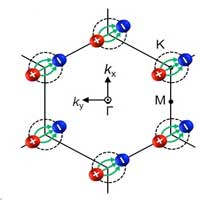 Electrical manipulation of magnetic particle allows for large high-speed memory.
Electrical manipulation of magnetic particle allows for large high-speed memory.
Monday, April 20, 2020
Advanced memory from advanced materials
 Electrical manipulation of magnetic particle allows for large high-speed memory.
Electrical manipulation of magnetic particle allows for large high-speed memory.
Mass-produced microscopic sensors see the light
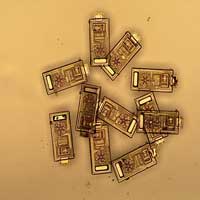 Theologians once pondered how many angels could dance on the head of a pin. Not to be outdone, researchers who build nanoscale electronics have developed microsensors so tiny, they can fit 30,000 on one side of a penny.
Theologians once pondered how many angels could dance on the head of a pin. Not to be outdone, researchers who build nanoscale electronics have developed microsensors so tiny, they can fit 30,000 on one side of a penny.
Scientists uncover principles of universal self-assembly
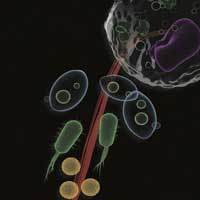 Self-assembly is the process that built up life and its surrounding, atom-by-atom. Now, a team of scientists has demonstrated the fundamental principles of a universal self-assembly process acting on a range of materials starting from a few atoms-large quantum dots up to nearly 100 trillion atoms-large human cells.
Self-assembly is the process that built up life and its surrounding, atom-by-atom. Now, a team of scientists has demonstrated the fundamental principles of a universal self-assembly process acting on a range of materials starting from a few atoms-large quantum dots up to nearly 100 trillion atoms-large human cells.
Unprecedented 3D images of live cells plus details of molecules inside
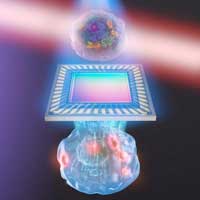 No damage caused by strong light, no artificial dyes or fluorescent tags needed.
No damage caused by strong light, no artificial dyes or fluorescent tags needed.
Self-aligning microscope smashes limits of super-resolution microscopy
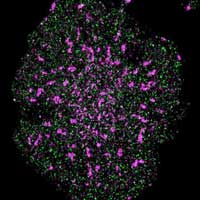 Medical researchers have achieved unprecedented resolution capabilities in single-molecule microscopy to detect interactions between individual molecules within intact cells.
Medical researchers have achieved unprecedented resolution capabilities in single-molecule microscopy to detect interactions between individual molecules within intact cells.
New 'brick' for nanotechnology: Graphene Nanomesh
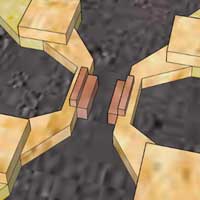 Researchers have successfully demonstrated the fabrication of large-area suspended graphene nanomesh by helium ion beam microscopy.
Researchers have successfully demonstrated the fabrication of large-area suspended graphene nanomesh by helium ion beam microscopy.
Researchers advance neuromorphic computing with protein nanowires
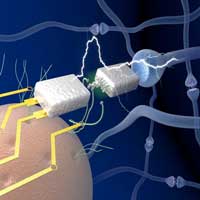 Researchers discovered, while on their way to better understanding protein nanowires, how to use biological, electricity conducting protein filaments to make a neuromorphic memristor, or 'memory transistor', device.
Researchers discovered, while on their way to better understanding protein nanowires, how to use biological, electricity conducting protein filaments to make a neuromorphic memristor, or 'memory transistor', device.
Subscribe to:
Comments (Atom)
